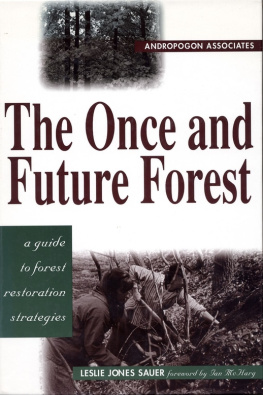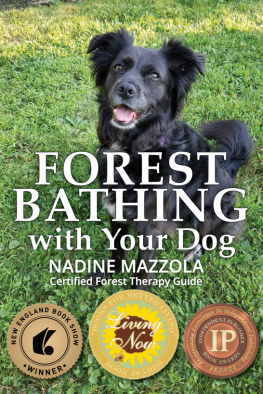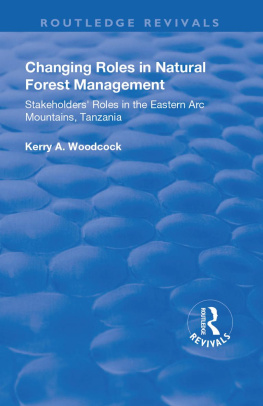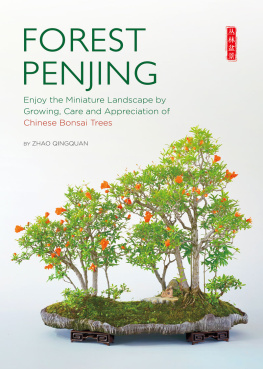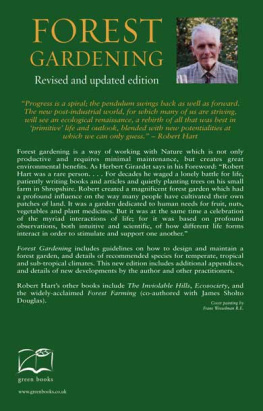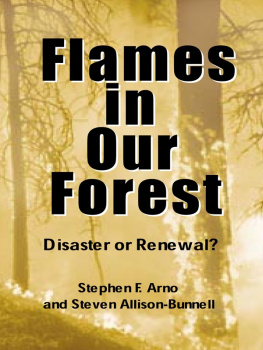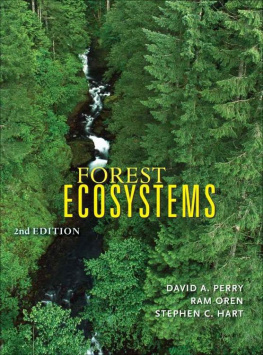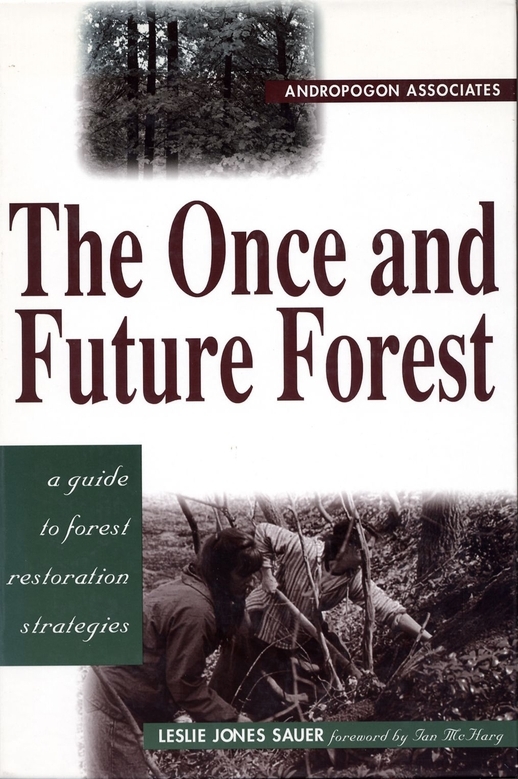A complete list of the people who contributed to this book would comprise another chapter. Rather than try to list them all, we would like to single out a few people and organizations that are emblematic of the kind of support we have received. We owe a very special debt of gratitude to James Amon, the director of New Jerseys Delaware and Raritan Canal Commission. He collaborated on Chapter 1 and his words can be found throughout this document. Without him, this book might never have happened.
Every page of this book stems in part from our clients, both public and private, who haved worked with us to set new standards for how we use the land. They have accepted the challenge to change conventional approaches with eagerness and often courage in the face of uncertainty about any innovation. Behind every restoration effort there are a few extraordinarily dedicated and creative people who make it all happen. Central Park, for example, has many heroes, but none has been so important to forest restoration as Maryanne Cramer, the Central Park Planner, who has championed the North Woods Project since its inception. We thank her and the many others like her with whom we have worked.
We have also relied upon many organizations and volunteer groups. One in particular, the Society for Ecological Restoration, has served as the most diverse and creative forum for exchanging ideas and information about restoration. The Wissahickon Rebuilding Committee has shown us the potential of grassroots initiatives. We also wish to express our gratitude to Island Press, a very exceptional publisher whose books fill our library. It has been a pleasure to work with Barbara Dean, Barbara Youngblood, and Fran Haselsteiner, who together brought this project to fruition.
We can never adequately thank the many individuals at Andropogon who have had a hand in this book and the projects that inspired it. In addition to providing invaluable help with graphics and manuscript preparation, they have been instrumental in developing our approach to landscape planning and design. Lastly, Leslie Sauer wishes to express her deepest gratitude to her partners, Carol and Colin Franklin, Rolf Sauer, Noline Mills, Jos Almiana, and Yaki Miodovnik, for their willingness to undertake this effort and for making Andropogon a firm with a mission.
APPENDIX A
Species List
* denotes exotics.
alder Alnus spp.
African cattle egret Bubulcus iris*
American buffalo Bison bison
American chestnut Castanea dentata
American elm Ulmus americana
American ginseng Panax quinquefolius
Amur cork tree Phellodendron amurense*
anise hyssop Agastache foeniculum
annual rye Secale cereale*
arrowhead Sagittaria latifolia
arrowwood Viburnum dentatum
ash Fraxinus spp.
ash yellows a disease of ash and lilacs caused by a pathogen called a phytoplasma
aster Aster spp.
auroch Bos primigenius
autumn olive Eleagnus umbellata*
balsam woolly adelgid Adelges piceae*
barberry Berberis spp.*
basswood Tilia americana
bats the suborder Microchiroptera, a group of flying mammals
beach plum Prunus maritima
bear, black bear Ursus americanus
beaver Castor canadensis
beebalm Monarda didyma
beech Fagus grandifolia
beech bark disease Nectria coccinea var. faginata* and Nectria galligena, fungal pathogens of beech
beech scale Cryptococcus fagisuga*, spreads beech bark disease
bellwort Uvularia spp.
bergamot Monarda fistulosa
bidens Bidens spp.
big bluestem Andropogon gerardii
bison See American buffalo
black birch Betula lenta
black cherry Prunus serotina
black cohosh Cimicifuga racemosa
black fly Simulium jenningsi
black gum Nyssa sylvatica
black locust Robinia pseudoacacia
black oak Quercus velutina
black walnut Juglans nigra
black-crowned night heron Nycticorax nycticorax
black-eyed Susan Rudbeckia triloba
bleeding heart Dicentra eximia
bloodroot Sanguinaria canadensis
blue cohosh Caulophyllum thalictroides
blueberry Vaccinium spp.
blue iris Iris versicolor
bluestem See little bluestem
bluets Hedyotis species
bobcat Felis rufus
boltonia Boltonia asteroides
broad-leaved plantain Plantago major*
brook trout Salvelinus fontinalis
box elder Acer negundo
broomsedge Andropogon virginicus
brown trout Salmo trutta
Bt Bacillus thuringiensis
buckthorn Rhamnus spp.*
buckwheat Fagopyrum sagittatum*
bullfrog Rana catesbiana
bur oak Quercus macrocarpa
burrowing mole salamander Ambystoma talpoideum
bush honeysuckle Diervilla lonicera
butterfly weed Asclepias tuberosa
butternut walnut Juglans cinerea
butternut canker Sincoccus clavigignenti-juglan-dacearum *
buttonbush Cephalanthus occidentalis
Canada goose Branta canadensis
Canada hemlock Tsuga canadensis
Canada lily Lilium canadense
Canada thistle Cirsium arvense*
Carolina parakeet Conuropsis carolinensis
catalpa Catalpa bignonioides
catbird Dumetella carolinensis
cattail Typha spp.
cattle Bos taurus*
cattle egret See African cattle egret
cecropia moth Hyalophora cecropia
cheat grass Bromus secalina
Cheat mountain salamander Plethodon nettingi
cherry Prunus spp.
chestnut See American chestnut
chestnut blight Cryphonectria parasitica*
Chewings fescue Festuca rubra commutata*
chicory Cichorium intybus*
chipmunk Tamias striatus
Christmas fern Polystichum acrostichoides
closed gentian Gentiana clausa
common milkweed Asclepias syriaca
common reed Phragmites australis
coneflower Echinacea spp.
coontie Zamia pumila
cottontail Sylvilagus floridanus
cottonwood Populus deltoides
cowbird Molothrus ater
coyote Canis latrans
crabgrass Digitaria sanguinalis*
crane flies family Tipulidae
creeping fescue Festuca rubra*
Culvers root Veronicastrum virginicum
dandelion Taraxacum officinale*
devils walkingstick Aralia spinosa
dog Canis familiarus*
dog-strangling vine Polygonum perfoliatum*
dogwood Cornus spp.
dogwood anthracnose Discula destructiva*
dogwood blight See dogwood anthracnose
downy woodpecker Piscoides pubescens
dragonflies flying insects of the Order Odonata
duskywing skipper butterfly Erynnis persius persius
Dutch elm disease Ceratocystis ulmi*
Dutchmans breeches Dicentra cucullaria
eastern box turtle Terrapene carolina
elderberry Sambucus canadensis or S. racemosa
elk Cervus elephas
elm See American elm
elm spanworm Ennoma subsignarius*
English ivy Hedera helix*
Entomophaga mamaiga a fungus that kills gypsy moth
fairy shrimp Streptocephalus spp.
false Solomons seal Smilacina racemosa
false wild indigo Baptisia tinctoria
fescue Festuca spp., some native but most exotic*
fir Abies spp.
Florida atala butterfly Eumaeus atala florida
Florida panther Felis concolor coryi
flowering dogwood Cornus florida
flycatcher insectivorous birds of the genera Myiarchus and Tyrannus
foxtail Setaria spp.*
fringed gentian Gentiana crinita
fritillaries subfamily Argynninae of butterflies
frosted elfin butterfly Incisalia irus
garlic mustard Alliaria petiolata*
giant tar spot a fungal disease of Norway maple

